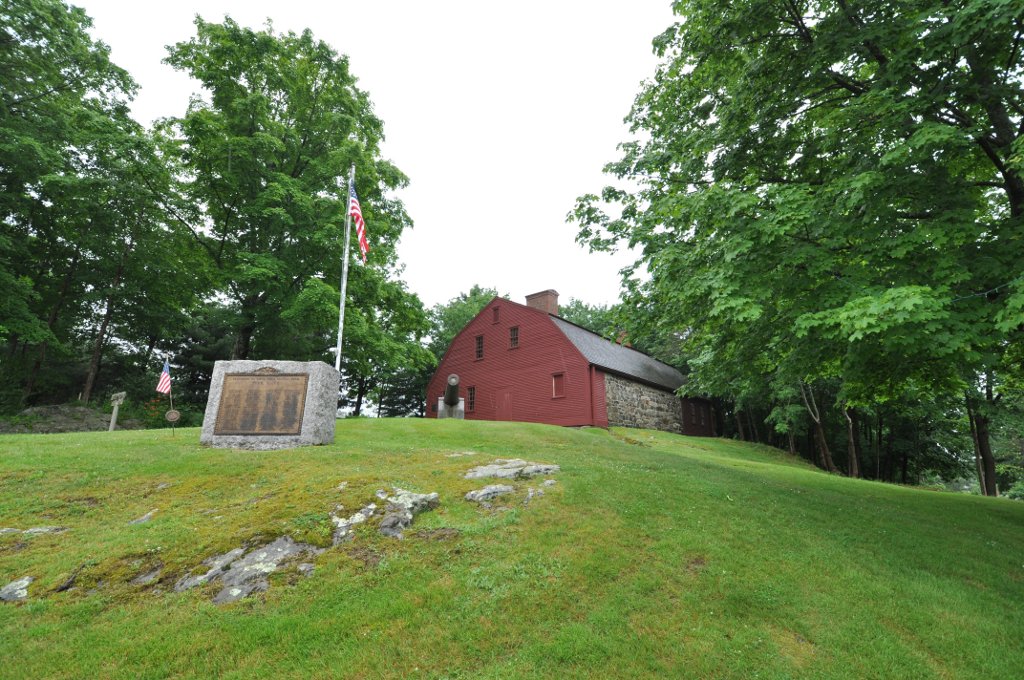York is an historic town near the southern tip of the state. It includes the villages of York Village, York Beach, and Cape Neddick. Its year round population is 12,529, but this number swells in the summer because of York’s reputation as a resort. Several famous American authors have been known to spend their summer months in York, including Mark Twain.

York’s history is nothing if not confusing. Hopefully I can clear it up. It was first settled in 1624 and was originally called Agamenticus, the Abenaki term for the York River. British settlers changed the name to Bristol in 1638, after Bristol, England, from which they had come. But even this name didn’t stick. Sir Fernando Gorges, as a member of the Plymouth Council for New England, became the Lord Proprietor of Maine. He envisioned Bristol as the capital of his province and named it Gorgeana. But wait, the name changing not over yet!
After Gorges’ death, the Massachusetts Bay Colony (now the Boston area) claimed Gorgeana, and in 1652, York, Massachusetts (there was no intervening state of New Hampshire between Massachusetts and Maine at that time) was incorporated from a portion of Gorgeana. The incorporated town was then named York, for York, England. Imagine the problems a postman would have had trying to deliver mail during this time!
York was burned to the ground in January of 1692, during King William’s War, the first of six colonial wars fought between New France and New England along with their respective Native allies. One hundred English settlers were killed, and another 80 taken hostage. There’s a link to my home town of Plymouth here, because after the hostages were forced to walk to the French colony of Canada, they were ransomed by Captain John Alden, Jr., son of John Alden and Priscilla Mullins of the Plymouth Colony.
The final Indian attack on York occurred at Cape Neddick during Dummer’s War 1723, a series of battles between New England and the Wabanaki Confederacy (see W= Wabanaki), allies of New France. Hostilities finally ceased when France ceded all of its remaining mainland territories in North America to England with the 1763 Treaty of Paris.
York prospered during the colonial era, as a shipping center, the provincial capital and the site


of the Royal Jail. Wharves and warehouses contained sugar and molasses from the West Indies which were received in exchange for agricultural products and lumber. One of the York merchants was John Hancock. Following the American Revolution, however, the Embargo Act of 1807 crippled trade and York would not be prosperous again until after the Civil War when its colonial charm, sea and sand began to attract tourists.

Old York, the historic town center, was added to the National Register of Historic Places in 1973 and contains six preserved historic buildings, including the Gaol (Jail), the Old Schoolhouse, the 1834 Remick Barn, and Jefferd’s Tavern, a true colonial tavern dating back to 1750.
 Like Bar Harbor and Newport, Rhode Island, York became a fashionable summer resort in the so-called Gilded Age (the late 19th century, from the 1870s to about 1900; term coined by writer Mark Twain to mean a time of serious social problems masked by a veneer of gold). It retains many distinctive examples of the architecture of that time, particularly in the Shingle Style. Rhe Brewster’s interest in architecture would have her in
Like Bar Harbor and Newport, Rhode Island, York became a fashionable summer resort in the so-called Gilded Age (the late 19th century, from the 1870s to about 1900; term coined by writer Mark Twain to mean a time of serious social problems masked by a veneer of gold). It retains many distinctive examples of the architecture of that time, particularly in the Shingle Style. Rhe Brewster’s interest in architecture would have her in

seventh heaven in York!
![]()

My what a gorgeous set of buildings. And such a rich history, acting out European tensions as well as stabilizing a place against local opposition.
There is so much history there, it makes your head spin!
Have really enjoyed your posts on the challenge Noelle – all very informative and interesting. I definitely need to visit Maine 🙂
Thanks, Alison. I really enjoyed writing these posts.
Fun reading about a very different York to the one here in England.
Yes, very different. My husband and I visited York, England, some years ago on vacation. Another place full of history – even more, because it’s so much older!
Great history lesson, thank you. I really like York and its proximity to so many things, including Portsmouth and Ogunquit. You mentioned Augamenticus. Isn’t there a hiking trail and mountain by that name it far from there? I think I remember goi g there. In sorry you’re at the end of the alphabet because I’ve enjoyed your history of one of my favorite ones to visit. But I’m sure you’re looking forward to the end…:)
I’ll have to look that up, since I don’t know. I know there’s a Longfellow Trail. I AM looking forward to taking a break…but am thinking of doing a post on the Georgia peach, which we just drove by twice on a 1,000 mile road trip this last weekend (whew)!
That’s a long trip!! If I remember right, that mountain is off Rt1 between York and Ogunquit, but I may be mistaken. It’s been a while.
[…] York, a city to the north east with a deep history. Interestingly Noelle Granger, whose A to Z is here, has picked York in Maine with an equally compelling story to […]
A fashionable summer resort. Those words sound awfully soothing right now, at the end of this challenge, Sure, it’s not summer there, but I could envision relaxing in that beautiful place with so much history all around.
Me, too! And I will, in August when we go to Boothbay Harbor.
I really like those old postcards!
Me, too! I like to include them when I find them.